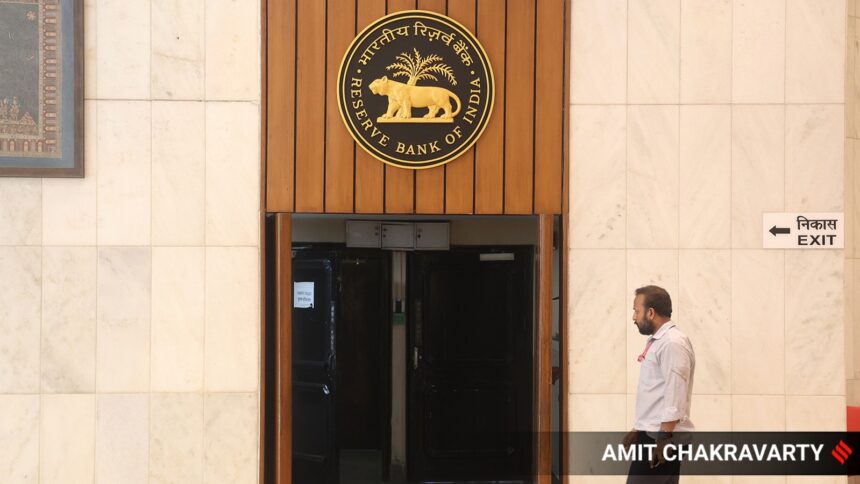As the Reserve Bank of India’s central board of directors meets today, all eyes would be on its decision regarding the Economic Capital Framework (ECF) — a rule-based system for the provisions the central bank must make against the risks it faces. While an increase in the risk buffer is likely due to the rising geopolitical tensions and global trade disruptions, this decision is being keenly watched as it could lead to a significant fiscal fallout — a reduction in the dividend the government gets from the RBI going ahead.
The RBI’s Central Board of Directors met last week to review the regulator’s Economic Capital Framework. The meeting of the board now comes after an internal review of the framework which was earlier outlined by the expert committee led by former governor Bimal Jalan in August 2019. The committee had suggested the framework be examined every five years. “Nevertheless, if there is a significant change in the RBI’s risks and operating environment, an intermediate review may be considered,” it had added.
The review of the framework is crucial as it can potentially dent a key source of revenue of the central government: the annual dividend from the RBI. The dividend for 2024-25 is expected to be transferred to the government this month and economists think it could be as high as Rs 3.2 lakh crore, or 6.3 per cent of the Indian government’s budgeted expenditure for 2025-26.
The Economic Capital Framework provides a rule-based system for the provisions the RBI must make against the risks it faces. These provisions are to be made from the revenue the apex bank generates in the normal course of its operations and after it has met its expenses.
A key recommendation of the Jalan committee was that the RBI should set aside 5.5-6.5 per cent of its balance sheet as a Contingent Risk Buffer to meet the credit, operational, and financial and monetary stability risks it faced. This means, if the RBI’s balance sheet grows by Rs 100 in any given year, the central bank would have to provide an additional Rs 5.5-6.5.
After maintaining a Contingent Risk Buffer of 5.5 per cent for three years after the Jalan committee’s recommendations were accepted, the RBI increased it to 6.0 per cent in 2022-23 and further to 6.5 per cent in 2023-24.
It is this key ratio, among other aspects, that would have been reviewed in recent months. What would a hypothetical increase in the Contingent Risk Buffer to 7.0 per cent from 6.5 per cent mean for the dividend? Considering its balance sheet expanded by around 7.0 per cent in 2024-25, the RBI would have to provide nearly Rs 70,000 crore to ensure its Available Realised Equity is equal to 7.0 per cent of its balance sheet.
As at the end of 2023-24, the Available Realised Equity — the sum of the RBI’s Contingency Fund, Asset Development Fund, capital, and Reserve Fund — stood at Rs 4.58 lakh crore, or 6.5 per cent of its balance sheet. Should the buffer be retained at 6.5 per cent for 2024-25, then the Available Realised Equity would have to be increased by around Rs 32,000 crore given a 7.0 per cent expansion of the balance sheet.
While a hike in the Contingent Risk Buffer from 6.5 per cent would no doubt dent the dividend the government would get, it may still exceed last year’s Rs 2.11 lakh crore largely on account of the RBI’s gains from its foreign exchange transactions.
“While there are discussions that the RBI may tweak the economic capital framework and widen the contingent risk buffer (realised capital), we do not think this would impact the RBI’s profit this year,” Madhavi Arora and , economists at Emkay Global Financial Services, said in a note on Thursday. The duo sees the RBI’s dividend for 2024-25 around Rs 3.2 lakh crore, higher than the Rs 2.56 lakh crore estimated in the 2025-26 as dividend from the central bank and public sector banks and financial institutions.
In 2024-25, the RBI’s gross foreign currency sales rose to an all-time high of $398.71 billion. To put this figure into perspective, its gross sales of $153.03 billion in 2023-24 helped generate an exchange gain of Rs 83,616 crore – or 30 per cent of the RBI’s total income that year. According to Gaura Sen Gupta, IDFC FIRST Bank’s chief economist, the RBI’s gains from foreign exchange transactions may have more than doubled in 2024-25 to Rs 1.73 lakh crore.
The RBI makes an exchange gain on its foreign exchange transactions when the price at which it sells a foreign currency is higher than the historical acquisition cost. According to Sen Gupta, the historical cost of the RBI’s gross dollar purchase is currently tracking at Rs 68.4. The rupee ended 2024-25 at around 85.5 per dollar after having fallen to an all-time low of 87.95 per dollar in early February 2025.








